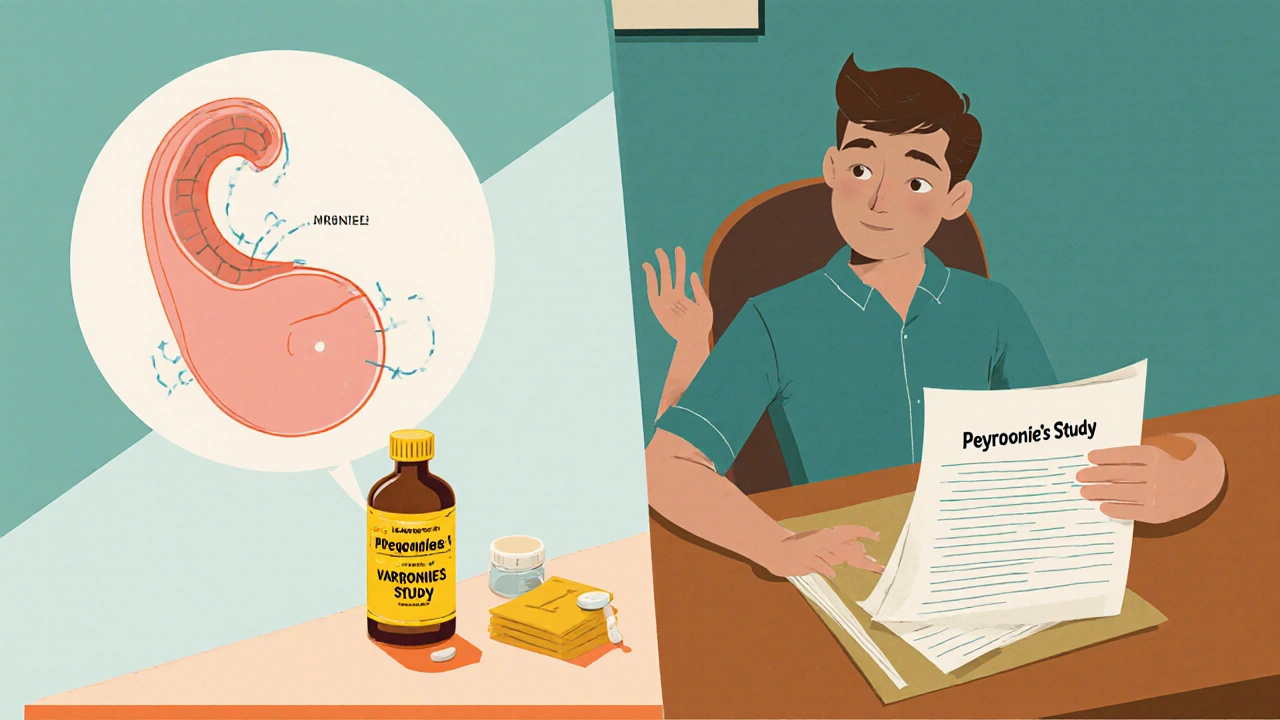Penile Curvature Treatment: Options, Causes, and What Actually Works
When the penis bends during an erection—not from injury, but from scar tissue inside—it’s usually Peyronie's disease, a condition where fibrous scar tissue forms inside the penis, causing curvature, pain, or difficulty with intercourse. Also known as penile fibrosis, it affects about 1 in 10 men over 40, and while it’s not dangerous, it can seriously impact confidence and sexual function. This isn’t just a cosmetic issue. The scar tissue, called plaque, pulls unevenly on the erectile tissue, making the penis curve up, down, or sideways. Some men notice it suddenly after trauma; others develop it slowly over months. Either way, treatment isn’t about fixing how it looks—it’s about restoring function and comfort.
There are several proven paths to manage this. One option is collagenase injection, a FDA-approved enzyme that breaks down the scar tissue. It’s injected directly into the plaque, followed by gentle stretching, and can reduce curvature by 30% or more in many cases. Another is traction devices, wearable tools that gently stretch the penis daily to gradually straighten it over time. These aren’t magic, but studies show consistent use over 3–6 months can improve both curvature and length. For men with severe bends or erectile dysfunction, penile implants, surgically inserted cylinders that allow controlled erections, are often the most reliable fix. Surgery is usually a last resort, but when other methods fail, it gives back control.
What doesn’t work? Herbal pills, creams, or "miracle" devices sold online. These prey on embarrassment and promise quick fixes—none have solid proof. Even stretching by hand without a proper device can make things worse. The key is matching the treatment to the stage of the disease. Early on, injections or devices may help. Later, when the curve stabilizes and erectile function declines, implants often become the best answer. Your doctor will check for plaque size, pain levels, and how much the curvature affects sex before recommending anything.
The posts below cover real-world comparisons: how collagenase stacks up against surgery, what traction devices actually cost, and which supplements don’t help—despite the hype. You’ll find honest breakdowns of what’s backed by science, what’s just marketing, and what to ask your doctor before choosing a path. No fluff. Just what works, what doesn’t, and how to get there safely.

Vardenafil for Peyronie's Disease: Potential Benefits and What the Research Says
Explore whether vardenafil, a PDE5 inhibitor for ED, can help ease Peyronie's disease symptoms, the science behind it, study results, and practical guidance.
Read More